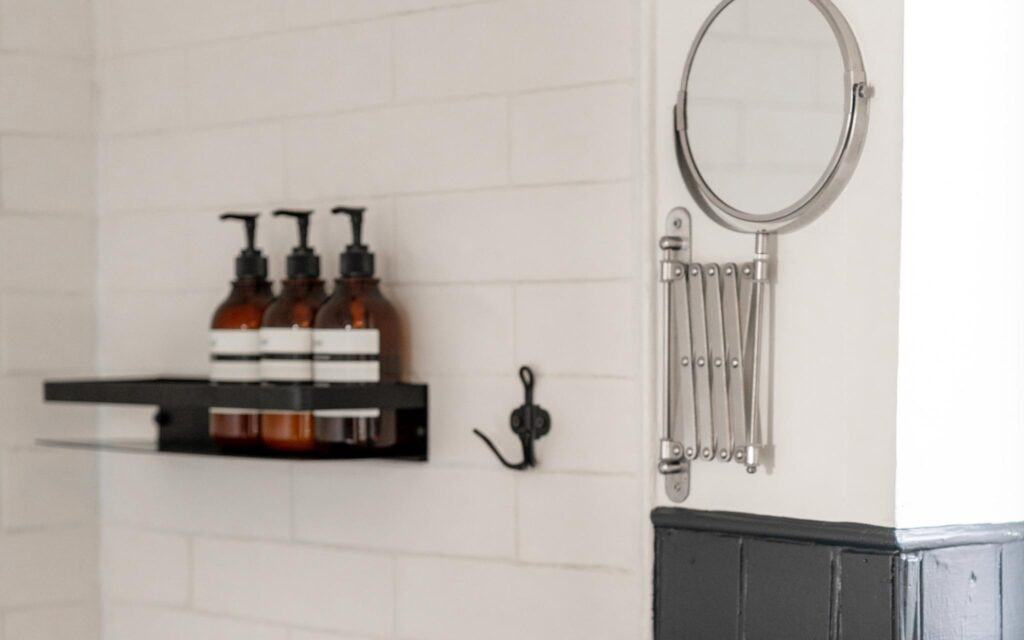Are you in the pursuit of a higher education or perhaps a student seeking a new place? Or are you considering coliving arrangements and wondering how they differ from student housing? If so, it’s vital to understand the distinctions between these two.
In this topic, we’ll explore the drawbacks and benefits of coliving and student housing to help you make an informed decision that aligns perfectly with your preferences and lifestyle. Whether you’re a social butterfly seeking a vibrant environment or a homebody looking for a quieter and more personal space, we’ve got you covered.
What is Student Accommodation?
Student accommodation is a form of housing built solely to provide dwellings to students. It spans from university-managed houses to university halls of residence and private halls or Purpose-Built Student Accommodation (PBSAs).
The Traditional Purpose and Rise of Student Accommodation
In addition to its primary purpose of housing students, student accommodations offer a convenient, safe, and community-focused student living environment. These benefits, combined with the reopening of colleges after the COVID-19 recovery, have brought positive growth to the real estate and accommodation market. Europe’s student housing market is valued at around €23 billion and is expected to produce a compound annual growth rate greater than 5% from 2023 to 2028.
What is Coliving?
Coliving is a modern concept of living and shared housing, where residents can opt for their own private bedrooms or apartments, and share communal areas such as the lounge, bathroom, and kitchen. These shared spaces are designed to promote social interaction among residents, promoting a sense of belonging and mutual support. In addition to fostering a sense of community and collaboration, it also benefits residents with affordability and convenience, serving as the solution to today’s evolving housing needs.

Coliving Growth Trend
As a result of the market’s inclination towards more affordable housing options, coliving has emerged and increased by an average of almost 40% between 2015 and 2021. And in 2022, the coliving sector received €963 million of investment, which is more than half of the total investment received in the preceding six years. 51% of European investors plan to be active in the sector, making it the joint third most invested-in living asset class.
“We are now witnessing an increasing trend of the UK’s regional markets embracing coliving”
Today, this modern housing concept continues to gain remarkable growth and significant interest from investors, operators, and dwellers, consisting of professionals, digital nomads, and students.
Key Differences of Coliving and Student Accommodation
Coliving: Targeted towards young professionals, remote workers, digital nomads and students
Student accommodation: Primarily for college and university students
Coliving: Flexibility in short-term and long-term stays
Student accommodation: Typically fixed terms, often aligned with academic years
Coliving: Emphasis on communal areas, shared resources, sometimes including co-working spaces
Student accommodation: More focus on individual needs, aligned with student life (e.g. study rooms, proximities to universities)
Coliving: Rental fee can included bundled services like WiFi, utilities and cleaning
Student accommodation: Typically excludes additional services and amenities such as community events and cleaning
Coliving: Emphasis on community building, networking and shared experiences
Student accommodation: More focus on academic life, but can also foster strong social bonds
Coliving: Often designed to be modern, sustainable, and fosters interaction
Student accommodation: More functional designs, aimed at supporting student routines
Loading..........
The Data is Not Available
Target Audience
Coliving is targeted towards young working professionals, whether single or married, remote workers, digital nomads, and students, while student accommodations are primarily built for college and university students.
Duration of Stay
Coliving offers flexibility in short-term and long-term stays. The duration of stay typically starts from one month and can continue for multiple years, depending on the need and agreement of the resident and the space owner. On the other hand, traditional student housing is typically offered in fixed terms, often aligning with the academic terms or as long as the student is enrolled

Amenities and Services
Coliving emphasizes more on communal areas such as shared living areas and resources, which include gyms, co-working spaces, laundry facilities, and kitchens. Some also offer additional services like maintenance, housekeeping, and organized social activities. However, student housing focuses more on services aligned with student life, such as quiet study areas and closer proximity to campuses.
Pricing Models
Coliving offers a package of rental prices and amenities in just one bill. This includes services like Wi-Fi, utilities, maintenance, house insurance, and a fully furnished unit. Student housing, on the other hand, varies significantly. Although most shared student housing options offer all-inclusive services, some still charge additionally for services and amenities such as community events, cleaning, and other utility bills.
Social and Community Aspect
Coliving emphasizes community building among its residents and others seeking a communal living experience. It also encourages networking by organizing events, such as workshops and communal meals, where residents can connect and build relationships. Student housing also does foster strong bonds, but focuses on students from various educational backgrounds, promoting both academic and social interaction. Living in a shared space also gives the students the privilege to easily form study groups and share academic resources.
Design and Infrastructure
Coliving spaces are often designed with open floor plans and installed with modular furniture and modern appliances throughout the kitchen, living rooms, and dining areas. It aims to provide functional shared spaces to promote social interaction while maximizing the number of private bedroom or apartments for the residents.
Meanwhile, student accommodations are designed with a purpose and the intention of taking into account the academic routines of students. Bedrooms often include study areas with desks and chairs to support studying and coursework. Some even have facilities, such as study rooms, tutoring centers, and computer labs.

Key Similarities of Coliving and Student Accommodation
As a response to changing lifestyles, evolving needs, and preferences of today’s residents, certain lines between coliving and student housing have started to overlap in modern scenarios.
Tenant base, hybrid development, and lease term
These three are interrelated because as more coliving spaces’ operators start to include students in their target audience, their coliving spaces are now hybrid-designed to cater to both the needs of students and young professionals. Providers are also now offering more flexible lease terms, allowing students to rent every month or sign longer leases.
Amenities, community-centric, and technology integration
Some newly-raised student accommodations now offer services that resemble those found in coliving spaces, such as co-working spaces, communal kitchens, lounge areas, gyms, and sometimes recreational facilities. Both housing options organize social events to open networking opportunities and foster a sense of camaraderie among residents looking for a more embracing living experience.
Technology integration is also becoming a common feature in coliving and student housing. Both living arrangements can now be seen utilizing high-speed internet, lease management apps, smart locks, and even online platforms for residents.
Cost options
Both coliving and student housing typically offer furnished rooms or apartments, to make it easier for residents to move in. Both provide a range of apartment configurations, like shared apartments, studio apartments, or their own private room in combination with shared living spaces. These flexible options cater to various preferences, fit for a sociable person looking for a communal atmosphere or a more private person seeking an independent living arrangement.
“These overlapping features of coliving space and student accommodation is a mark of the efforts to address the market demand for convenience, community, and affordability.”

The Pros and Cons
Pros of Coliving Spaces
Networking opportunities
Coliving spaces are naturally designed to foster community and social interaction. Given this, networking opportunity is already an inherent and notable advantage, especially for individuals who value making new connections.
Flexible lease terms
Young people, being more susceptible to change and making choices based on the opportunities and resources available, find the lease term flexibility of coliving ideal for them. This attractive option allows them the freedom to choose long-term or short-term stays, depending on their current needs.
Convenience
Many coliving spaces come fully furnished, making moving in easy without the hassle of purchasing or moving furniture. Some even develop their properties with durable and high-quality materials and fitted with smart furniture.
Cons of Coliving Spaces
People come and go
Considering that coliving often attracts individuals in a transitory state, or those with varied plans, it can sometimes be challenging to build long-term relationships with your housemates.
More expensive
Coliving spaces can be relatively costly, especially those in high-end or premium locations. Another contributing factor is the inclusion of cleaning services, high speed internet, furnished private room, and dedicated workspaces. As they say, convenience always comes with a price.
Pros of Student Accommodation
Student-Focused
Student accommodations often feature study rooms or designated study areas to provide a conducive environment for academic work. This intentional design approach ensures that students have the necessities and resources they need to excel in their studies.
Academic proximity and support
Students highly value their time and money. This is why students relocate to student housing and reside near educational institutions. Some student housing also offers academic support services like tutoring and study spaces, aiming to help students succeed academically.
Cons of Student Accommodation
Fixed terms
Student accommodations lease contracts often operate in sync with the academic year, which may not be as flexible as some occupants would prefer. Leaving ahead of the agreed date may involve some tedious process and may require you to pay the rent until the fixed term ends, even after moving out.
Potential for outdated facilities
After asking a group of students to evaluate their student housing and their views on the housing market of their cities, the overall results concluded with an average rating. Some even mentioned their hopes for renovations as their rooms tend to be outdated yet expensive.

Which is Right for You?
Coliving might be for you if you value:
- You value community and social interaction and want to live in a community of diverse individuals.
- You prefer flexible lease terms to allow you to choose from short-term or long-term options.
- You appreciate functional amenities, such as gyms, communal spaces, and other facilities.
- You want to live in an urban or suburban location of your choice to cater to your specific lifestyle preference.
Student accommodation might be for you if you value:
- Living in close proximity to your educational institution. This makes attending classes and accessing campus resources more convenient.
- Academic support services such as study spaces and tutoring.
- Cost-efficient options, especially if you are on a budget.
- Security and a safe and well-monitored environment.
In addition to considering these factors, it may also be best to visit potential locations or speak with current residents to get a better understanding of the environment and amenities offered in each living arrangement.
Coliving Space or Student Housing?
While coliving and student accommodations share similarities, they also have features that make each unique. One offers a more social environment, while the other focuses on providing housing suited for student living. Ultimately, the choice lies in your personal growth plans, financial situation, socialization, and academic goals. Consider these factors and align your needs to your decision to later on enhance your overall university experience and enjoy the benefits of a convenient living environment.
The Citylifer Perspective
The Citylifer brand is dedicated to providing a housing solution that is uniquely catered to young adults. We’ve drawn a lot of inspiration from the PBSA market, which has designed their offerings around the needs of students. We strive to do the same for young adults. Moreover, shared amenities and the sense of community in PBSA buildings are aspects that are appreciated not just by students, but also by older demographics. However, The Citylifer does have some clear differences with PBSA:
Community Above All Else
Community is key in our design. We truly believe the profound impact meaningful social interaction can have on individual well-being and social cohesion within the building. To cultivate this, we have included three different layers of community:
- Family room: We divide our buildings into community clusters, accommodating 15 to 25 people who exclusively share a fully-equipped family room
- Shared areas: Our residences feature shared areas – like a rooftop or game areas – which are exclusively accessible to the resident community.
- Public areas: Strategically positioned, primarily on the ground floor, public areas are designed for residents and neighbors to meet and interact with each other, fostering wider community interaction.
Strategically Located Amenities-Rich Residences
Location can make or break your experience in a new city. That’s why The Citylifer’s properties are strategically situated in hip and upcoming neighborhoods, providing easy access to public transport, shopping centers, and entertainment venues. Beyond location, our buildings offer a range of on-site amenities, from co-working spaces and coffee bars to gyms, adding convenience and richness to your daily life.
Sustainable Living
The goal is to minimize energy needs as much as possible. The first step is to create energy-efficient buildings. Next, we actively educate our residents about energy consumption. Lastly, we prioritize local green energy, and if more is needed, we turn to remote renewable sources.
Plug-and-Play Lifestyle
The Citylifer is designed to make your transition to a new environment as seamless as possible. Our plug-and-play lifestyle ensures that all housing costs, from rent to utilities, are wrapped into one straightforward contract. High-speed internet is a given, and we’ve also implemented robust security measures to ensure peace of mind. To accommodate the ever-changing plans of a digital nomad, we offer flexible contract terms for both short and long-term stays.
FAQ
Coliving typically involves living in a managed property with a focus on community and all the amenities while roommates refer to sharing coliving spaces, often in informal arrangements, without the added services and amenities of coliving.
Shared living encompasses any living situation where individuals share a residence and may lack a sense of community and amenities while coliving is a specific type of shared living with a focus on community, often in a managed property with additional services.
The main advantages of coliving are cost-effective living, community-oriented lifestyle, convenience, and flexible lease terms.
Student residence is specifically designed for students, often near campuses, with amenities and support services while the regular apartment is a self-contained living space, available for various individuals, including students, and may lack specific student-focused services.





